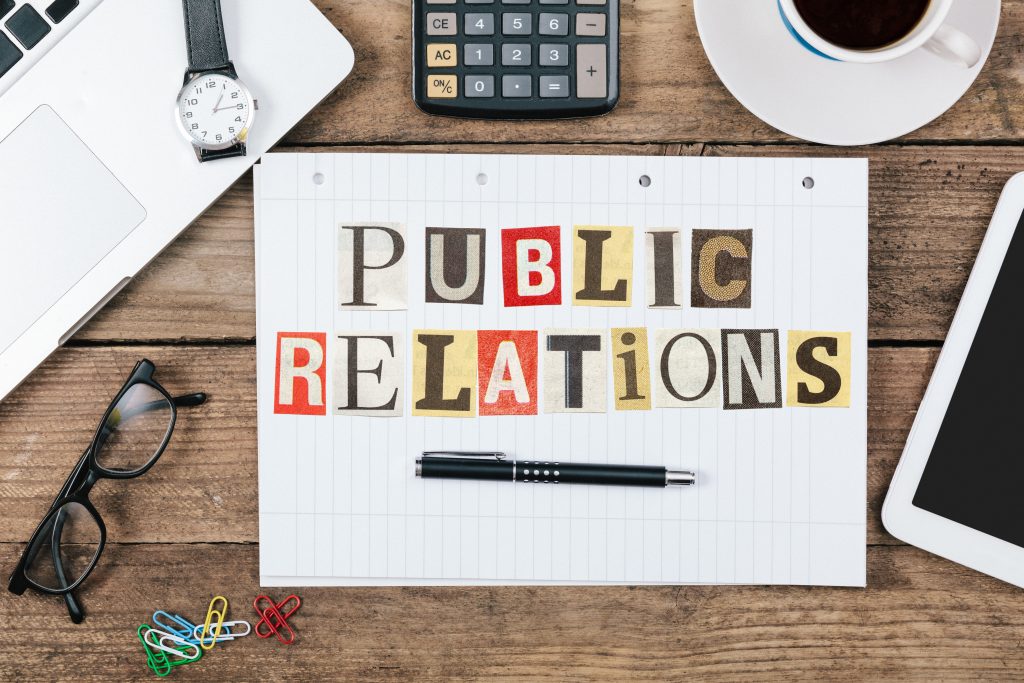
Powerful Nonprofit Public Relations Campaigns: A Communication and Social Media PR Strategy Overview
As a nonprofit organization, your mission is to make a positive impact on the world, but how can you achieve that if you don’t have effective nonprofit public relations strategies in place?
Nonprofit public relations strategies are an essential part of any organization’s success. PR strategies focus on building relationships with the public, raising awareness of the organization’s mission and work, and promoting its values and achievements. In today’s digital world, nonprofit organizations must develop a robust online presence to reach their target audience effectively. In this article, we will outline some effective traditional and social media outreach strategies that can help your organization succeed in the digital age.
Public Relations for Nonprofits—Why PR Matters
Public Relations (PR) is a critical component for the success of any nonprofit organization. Nonprofits rely on the support and donations of the public to achieve their goals, and effective nonprofit public relations helps to build meaningful relationships with supporters, donors, and other stakeholders. PR involves building a positive public image for the nonprofit, communicating its mission and values, and engaging with its audience through various channels. By utilizing PR strategies, nonprofits can increase awareness of their cause, gain support from the community, secure funding, and attract volunteers. In addition, PR can help nonprofits establish credibility and authority within their industries, enabling them to become trusted sources of information and advocacy for their respective causes. Overall, PR is an essential tool for nonprofits to reach new audiences, maintain relationships with existing supporters, and ultimately achieve their goals of making a positive impact on society.
Choosing Your Nonprofit Public Relations, Communication, and Marketing Strategy Platform
Choosing the right communication and marketing strategy platform can make all the difference for your organization. First, consider what the nonprofit wants and needs and its target audience. Do you need to reach more potential supporters or communicate more clearly with your current supporters? Your platform should offer features that align with your goals, such as social media management, email marketing, website hosting, and analytics tools to measure your success. Next, explore different platforms and their pricing models to find a solution that fits your budget. Additionally, look for a platform that offers training or support to help you maximize its features, as well as any security features to protect sensitive information. By taking the time to choose the right platform, you can build a successful public relations, communication, and marketing strategy to achieve your organization’s goals.
Creating A Public Relations Strategy for your Nonprofit
Creating a public relations strategy for your nonprofit is essential to raising awareness and support for your cause. Start by identifying your target audience and understanding what messages resonate with them. Utilize social media platforms and press releases that you can pitch to the media. Engage with community leaders and partner organizations to build relationships and expand your reach. Don’t forget to set measurable goals and track your progress. Be sure to stay authentic and true to your organization’s mission and values in all communications. By developing a comprehensive PR strategy, you can amplify your nonprofit’s message and increase your impact on the community. If you find this work overwhelming, consider contacting a PR agency to help with your initiative.
Launching a Public Relations Campaign—What you need to know

Launching a successful nonprofit public relations (PR) campaign requires proper planning, strategy, and execution. One of the crucial components of PR is to understand the target audience and their preferences. Crafting the message to resonate with the audience and highlight the unique selling proposition is crucial. The next step is to choose the right media channels to maximize the reach of the campaign. A well-executed PR campaign can generate media coverage, increase brand awareness, and positively impact the company’s bottom line. It is essential to establish measurable objectives and key performance indicators (KPIs) to evaluate the success of the campaign. A comprehensive and well-planned PR campaign can improve an organization’s reputation, increase its credibility, and build a strong relationship with stakeholders.
Nonprofit Social Media Tactics – Important Facts

Social media marketing can be a powerful tool for nonprofit organizations to build awareness, connect with supporters, and raise funds. When creating a social media strategy, it’s important to establish clear goals and objectives. Nonprofits should use platforms that align with their audience, such as Facebook, Twitter, Instagram, and LinkedIn. Posting consistent, engaging content that showcases the organization’s mission and impact is key to building a following. Nonprofits should also use social media to drive donations and promote fundraising campaigns. Encouraging supporters to share and engage with posts can increase visibility and reach and can yield better results than paid advertising. Collaboration with other organizations and influencers in the nonprofit space can also amplify a nonprofit’s message online. Regularly tracking social media metrics can help nonprofits adjust and improve their strategy over time.
Publicity Tactics for Nonprofit Organizations

Develop A Strong Online Presence
A nonprofit organization’s online presence is crucial in today’s digital age. A strong online presence can help your organization reach a broader audience and increase awareness of your mission and work. The first step in developing a strong online presence is to create a website that is user-friendly, easy to navigate, and visually appealing. Your website should contain information about your organization’s mission, history, achievements, and programs. It should also include a donation page and a blog where you can share your organization’s latest news and events.
In addition to a website, your organization should also have a presence on social media platforms such as Facebook, Twitter, Instagram, and LinkedIn. Social media platforms are an excellent way to connect with your audience, share your organization’s story, and build relationships with supporters. It is essential to maintain an active presence on social media and post engaging content regularly.
Create Compelling Content
Creating compelling content is a critical strategy. Your organization’s content should be informative, engaging, and shareable. It should tell your organization’s story and convey your values and achievements. Your content should also be tailored to your target audience and should be easy to read and understand.
There are several types of content that your organization can create, including blog posts, infographics, videos, and podcasts. Blog posts are an excellent way to share your organization’s latest news and events, while infographics are a great way to present data and statistics in an easy-to-understand format. Videos and podcasts can be used to share your organization’s story and mission in a more personal and engaging way.
Develop Relationships with the Media
Developing relationships with the media is a top priority. The media can help your organization raise awareness of its mission and work and reach a broader audience. To develop relationships with the media, you should identify journalists and media outlets that cover topics related to your organization’s mission and work. You can then reach out to these journalists and media outlets and offer to provide them with information, interviews, and other resources.
It is also essential to monitor the media for any coverage of your organization and respond promptly to any negative coverage. By developing relationships with the media, your organization can build its reputation, raise awareness of its mission and work, and reach a broader audience.
Host Events
Hosting events is another effective nonprofit public relations strategy. Events provide an opportunity for your organization to engage with supporters, raise awareness of its mission and work, and generate media coverage. There are several types of events that your organization can host, including fundraising events, conferences, and workshops.
When planning an event, it is essential to consider your target audience and their interests. You should also consider the logistics of the event, such as the venue, catering, and transportation. By hosting events, your organization can build relationships with supporters, raise awareness of its mission and work, and generate media coverage.
Build Partnerships
Partnering with other organizations that share your values and mission can be a powerful way to achieve your goals. Look for opportunities to collaborate on events, campaigns, or projects that align with your mission and values. By working together, you can amplify your message and reach a wider audience.
Keep in mind, nonprofit PR strategies are an essential part of any nonprofit organization’s success. Developing a strong online presence, creating compelling content, developing relationships with the media, and hosting events are all effective strategies for raising awareness of your organization’s mission and work. By implementing these nonprofit public relations strategies, your organization can build its reputation, reach a broader audience, and achieve its goals.
